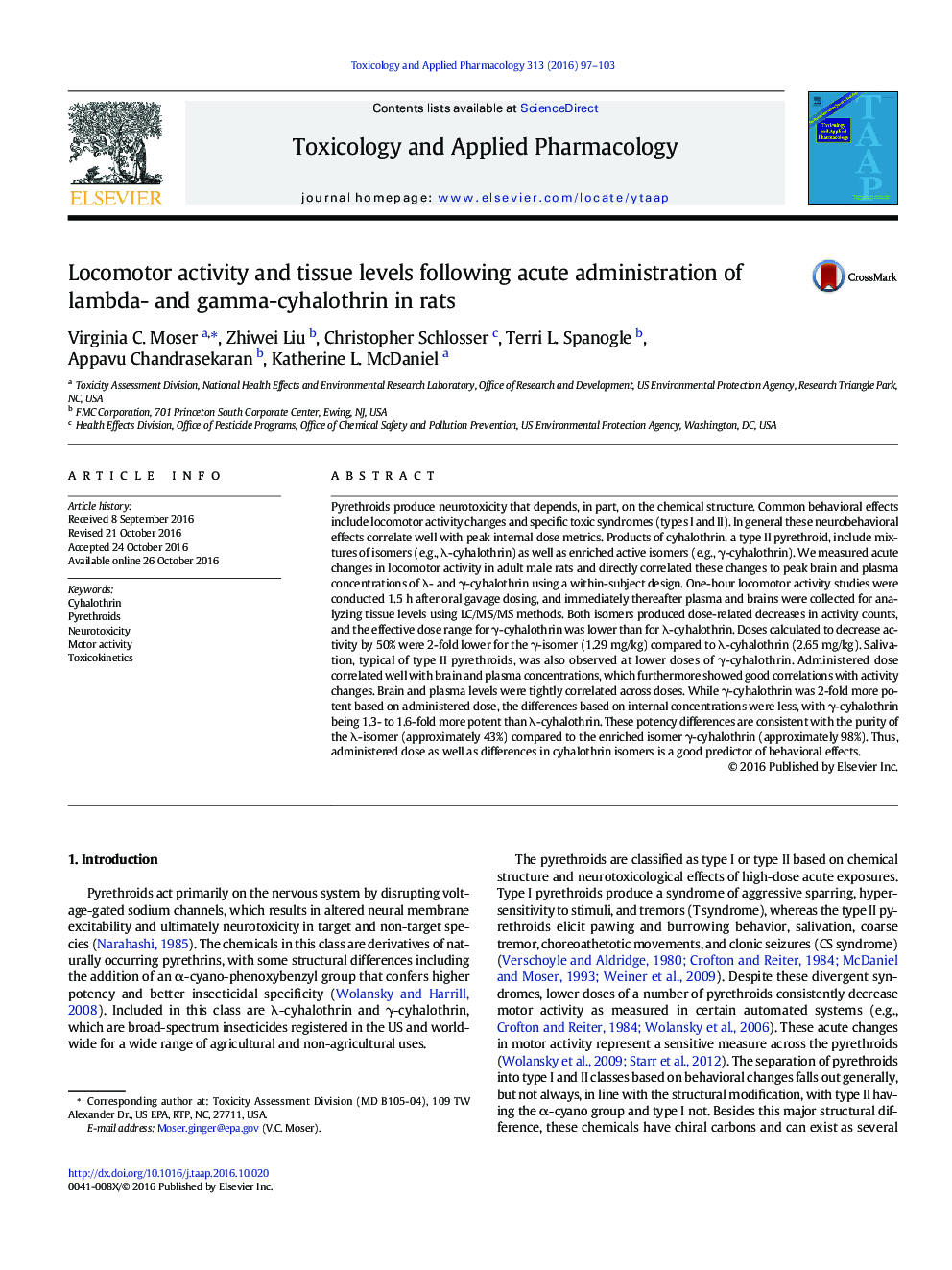| Article ID | Journal | Published Year | Pages | File Type |
|---|---|---|---|---|
| 5558482 | Toxicology and Applied Pharmacology | 2016 | 7 Pages |
Abstract
Pyrethroids produce neurotoxicity that depends, in part, on the chemical structure. Common behavioral effects include locomotor activity changes and specific toxic syndromes (types I and II). In general these neurobehavioral effects correlate well with peak internal dose metrics. Products of cyhalothrin, a type II pyrethroid, include mixtures of isomers (e.g., λ-cyhalothrin) as well as enriched active isomers (e.g., γ-cyhalothrin). We measured acute changes in locomotor activity in adult male rats and directly correlated these changes to peak brain and plasma concentrations of λ- and γ-cyhalothrin using a within-subject design. One-hour locomotor activity studies were conducted 1.5 h after oral gavage dosing, and immediately thereafter plasma and brains were collected for analyzing tissue levels using LC/MS/MS methods. Both isomers produced dose-related decreases in activity counts, and the effective dose range for γ-cyhalothrin was lower than for λ-cyhalothrin. Doses calculated to decrease activity by 50% were 2-fold lower for the γ-isomer (1.29 mg/kg) compared to λ-cyhalothrin (2.65 mg/kg). Salivation, typical of type II pyrethroids, was also observed at lower doses of γ-cyhalothrin. Administered dose correlated well with brain and plasma concentrations, which furthermore showed good correlations with activity changes. Brain and plasma levels were tightly correlated across doses. While γ-cyhalothrin was 2-fold more potent based on administered dose, the differences based on internal concentrations were less, with γ-cyhalothrin being 1.3- to 1.6-fold more potent than λ-cyhalothrin. These potency differences are consistent with the purity of the λ-isomer (approximately 43%) compared to the enriched isomer γ-cyhalothrin (approximately 98%). Thus, administered dose as well as differences in cyhalothrin isomers is a good predictor of behavioral effects.
Related Topics
Life Sciences
Environmental Science
Health, Toxicology and Mutagenesis
Authors
Virginia C. Moser, Zhiwei Liu, Christopher Schlosser, Terri L. Spanogle, Appavu Chandrasekaran, Katherine L. McDaniel,
